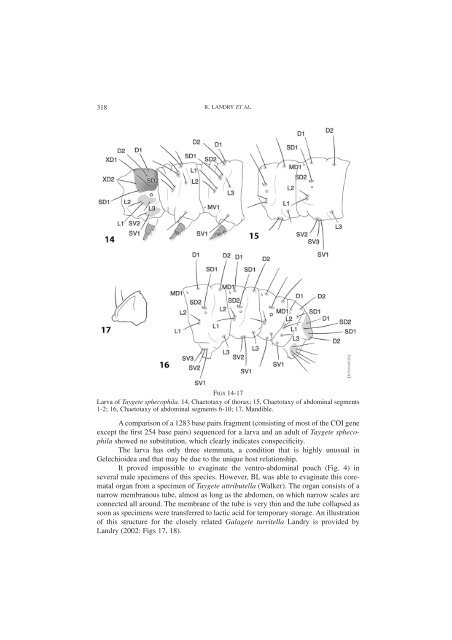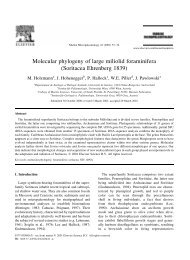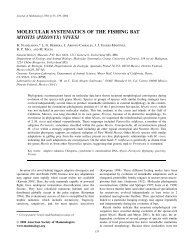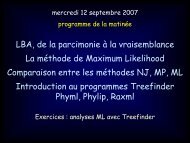Landry et al. 2006.pdf - Webspace
Landry et al. 2006.pdf - Webspace
Landry et al. 2006.pdf - Webspace
You also want an ePaper? Increase the reach of your titles
YUMPU automatically turns print PDFs into web optimized ePapers that Google loves.
318B. LANDRY ET AL.FIGS 14-17Larva of Tayg<strong>et</strong>e sphecophila. 14, Cha<strong>et</strong>otaxy of thorax; 15, Cha<strong>et</strong>otaxy of abdomin<strong>al</strong> segments1-2; 16, Cha<strong>et</strong>otaxy of abdomin<strong>al</strong> segments 6-10; 17, Mandible.A comparison of a 1283 base pairs fragment (consisting of most of the COI geneexcept the first 254 base pairs) sequenced for a larva and an adult of Tayg<strong>et</strong>e sphecophilashowed no substitution, which clearly indicates conspecificity.The larva has only three stemmata, a condition that is highly unusu<strong>al</strong> inGelechioidea and that may be due to the unique host relationship.It proved impossible to evaginate the ventro-abdomin<strong>al</strong> pouch (Fig. 4) insever<strong>al</strong> m<strong>al</strong>e specimens of this species. However, BL was able to evaginate this coremat<strong>al</strong>organ from a specimen of Tayg<strong>et</strong>e attributella (W<strong>al</strong>ker). The organ consists of anarrow membranous tube, <strong>al</strong>most as long as the abdomen, on which narrow sc<strong>al</strong>es areconnected <strong>al</strong>l around. The membrane of the tube is very thin and the tube collapsed assoon as specimens were transferred to lactic acid for temporary storage. An illustrationof this structure for the closely related G<strong>al</strong>ag<strong>et</strong>e turritella <strong>Landry</strong> is provided by<strong>Landry</strong> (2002: Figs 17, 18).






